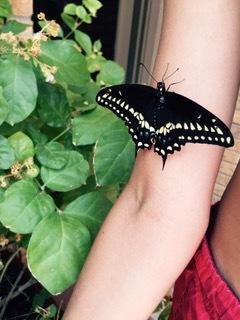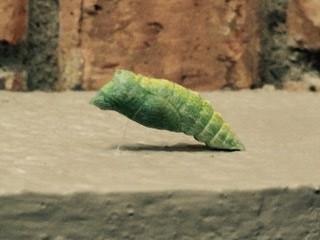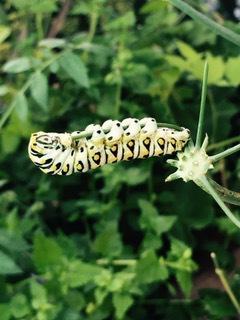Article and Photos By Diane Ford – Garfield County Master Gardener
Magic! That’s what I think so many times when I walk through our garden. Then when I look back at photos from the garden that I have taken over the years, the ones that speak to me the most are the ones I almost missed. Missed because I did not understand the cycle of nature, the balance she provides between what we get to eat and what insects get to eat, and the importance of observation.
Our grandchildren had just moved here from Atlanta toward the beginning of summer. I had planted fennel in the hopes of luring swallowtail butterflies to our yard. Monarchs and black swallowtails are two of the more intricately patterned and beautiful butterflies in our area. In fact, the black swallowtail is our state butterfly. I was explaining to my granddaughter that the swallowtail butterfly caterpillars would come to eat the fennel, grow, turn into chrysalises, and emerge as butterflies as the summer progressed. But, upon further inspection of the fennel plant, I noticed tiny black insects crawling all over the fennel. My first instinct was to shake the plant to protect it for the caterpillars. Wrong! I believe it was my granddaughter who suggested that those little critters might be the caterpillars (or their larvae) we were trying to attract.
Indeed, they were. Over the next several days we watched with fascination as the larvae grew and changed to orange/red and then green with black stripes. At this point, they looked more like caterpillars. They grew rapidly, devouring the fennel plant almost to the ground all within a few weeks. At one point, we counted 87 caterpillars! Then one day their numbers started to dwindle. Hiding under leaves, on branches, even on the side of our house, the caterpillars had changed into their chrysalis stage.
The day finally arrived when some of the butterflies emerged from their encasement. One way to attract a butterfly to you as they emerge is to put dabs of watermelon juice on your skin. They will be looking for a sweet food source. I have pictures of the swallowtails lighting on my grandchildren’s arms. It was truly magical for all of us.
I now know that swallowtails do not migrate like monarchs. They overwinter here in their chrysalis form, emerging in early April. They lay their eggs on the underside of leaves (200-430 eggs). The eggs take 10-13 days to hatch. They will feed on dill, fennel, and parsley for 3-4 weeks as caterpillars before forming a chrysalis. They will emerge as a butterfly 10-20 days later. They go through this cycle twice; once in early spring and again in late summer.
In closing, I’d like to suggest that you plant these herbs in your garden with the idea that they may be eaten by something other than yourself. I plant a lot in different areas of the yard. Then observe. These little miracles happen when you’re not looking. My hope for you is that you get to share in this magic someday with family members, young or old.








